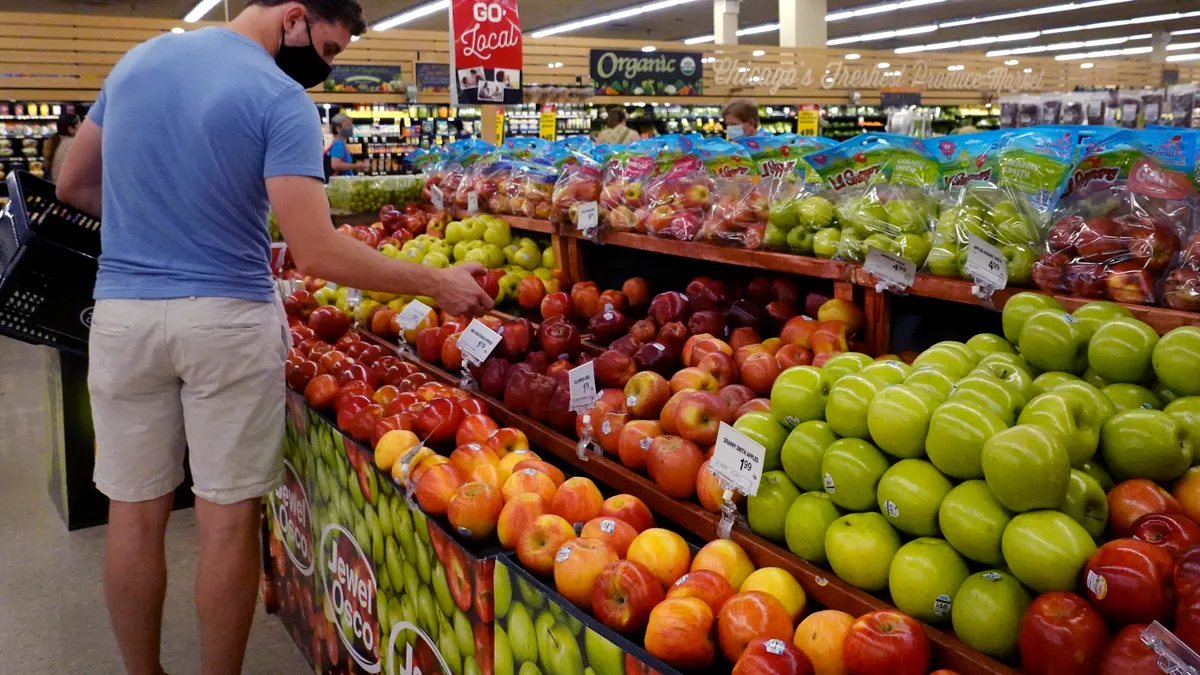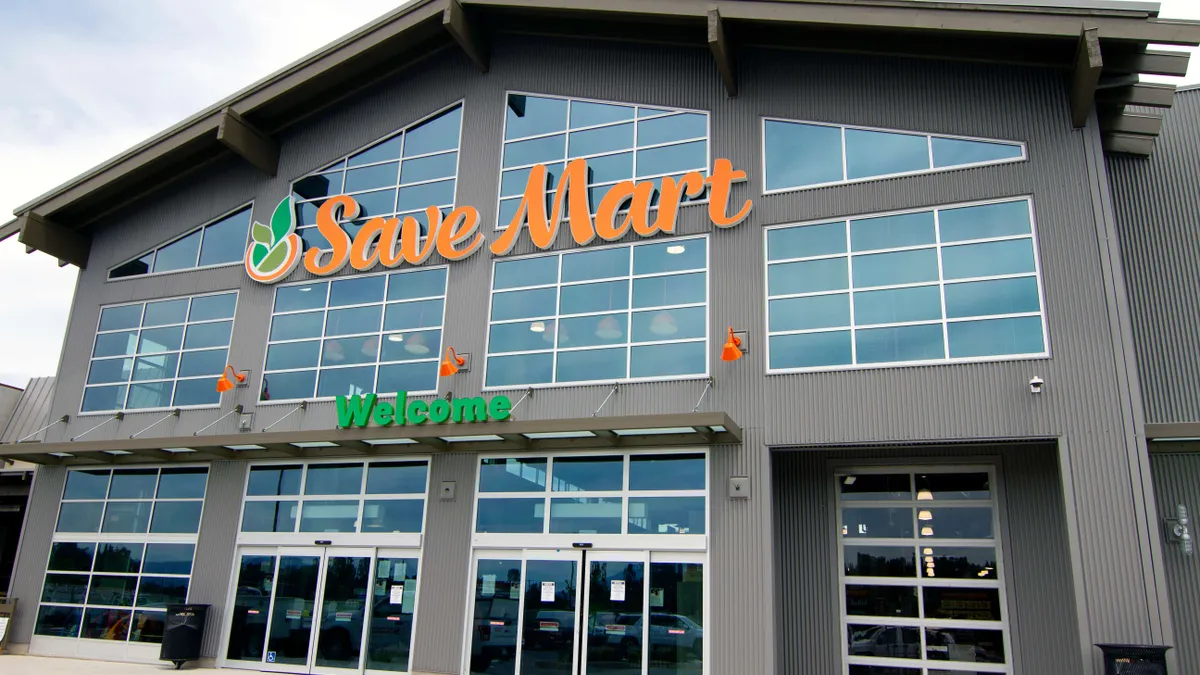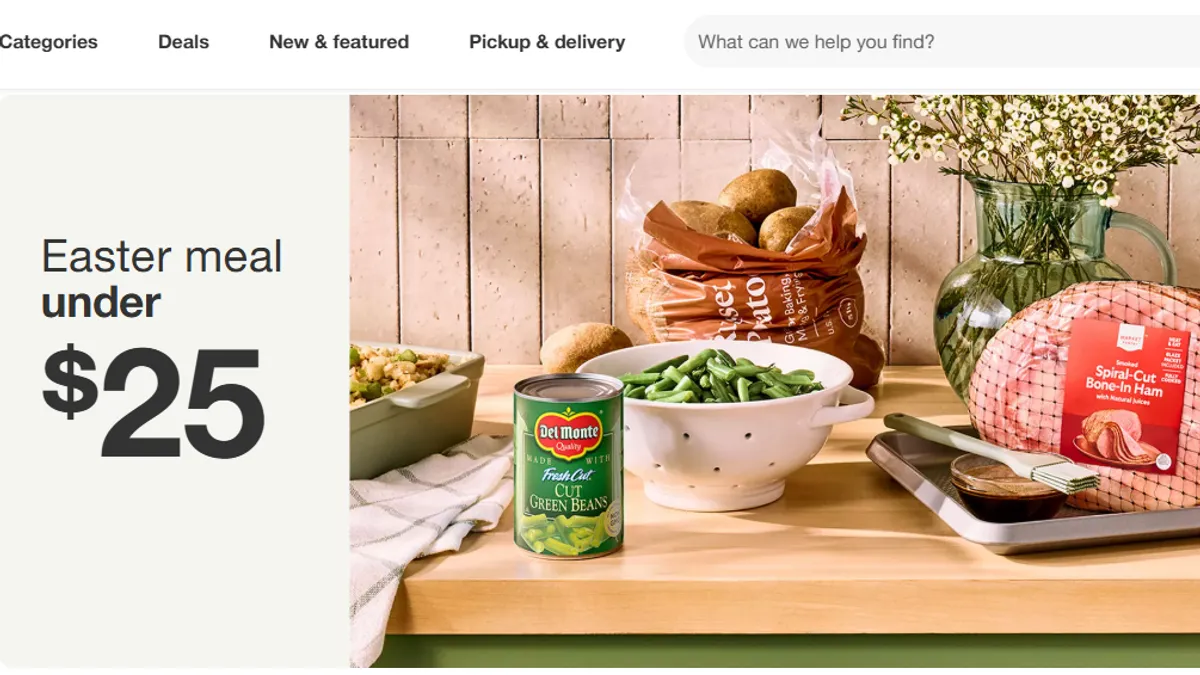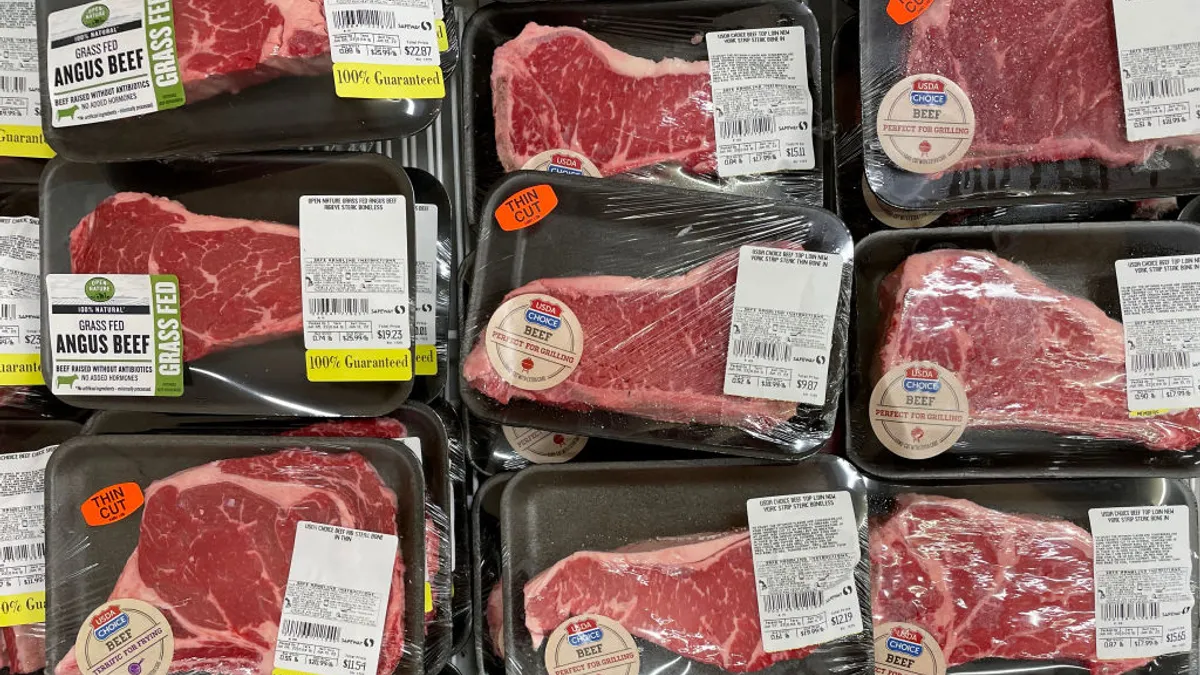Katie Thomas leads the Kearney Consumer Institute, an internal think tank at global strategy and management consulting firm Kearney. Tanya Moryoussef is a manager in the firm’s consumer practice.
Who’s better positioned for victory when it comes to battling for consumers: larger chain retailers or nimbler, smaller independents? Does size even matter?
A recent Kearney Consumer Institute (KCI) brief digs into consumer trust of institutions, particularly of large and small businesses. When asked overall, consumers told us they trusted small businesses to large businesses in a 3:1 ratio. This notion may lead larger businesses to try to mimic the intimacy of a small business.
But when we dug into specifics, the margin was never that large, and in fact, big business was often preferred. For food and grocery, 65% of consumers preferred large retailers and chains over smaller options.
It turns out, consumers are pretty objective in terms of what they look for, but the way to build trust varies depending on size. Big business wins on process, consistency and wide selection. Small wins on interaction, perception and craft.
Consumer trust relies on a foundation of honesty and consistency, but how it’s built differs depending on the size of the business. By peeling back the layers, we can better understand how to build trust with consumers, and how these approaches vary. The research highlights that some businesses are likely underplaying their inherent advantages and wasting assets in pursuit of what they see as “the other guy’s” strengths.
Consumers who prefer small grocers said their purchasing decisions almost always came down to their desire to invest in the community and the belief that the products being sold were “better.” We received comments such as, “I like to support my local companies as I know they help the community more than larger companies.” Or: “Food is less likely to be treated with harmful chemicals/Doesn’t travel as far from farm to market/Local people have more vested in the community so want to treat it right.”
The analysis also served as a reminder that consumers are shopping at more than one store and prioritize their purchases accordingly. “I usually go to a farmers market for fruits and vegetables and grocery store for the rest,” noted another consumer.
Conversely, many respondents like the offering of big retailers, with consumers telling us they like larger stores based on location and breadth. We heard comments such as, “It’s closer to my home, [has] a great rewards program, higher-quality foods, and great customer service,” and “I can do all my shopping in one place and get everything I need from beauty products to food items. I can also buy flowers and household products like toilet paper and clean products as well.”
On price and convenience, we heard, “I can get everything I need in one place at good prices,” and “It's nearby and convenient; I enjoy chains as well.”
Sometimes, it’s simply because of what they know: “I'm more comfortable and used to shopping at large supermarkets as it's what I've always done so that trust factor comes with the familiarity and consistency of doing so over many decades.”
As we continue to navigate this uncertain time, our research indicates that retailers should focus on their consumer-defined strengths, intuition and consumer observation.
1. Lean into your strengths
Building an effective consumer-based strategy begins by learning to play to your strengths. Retailers can continue to find ways to listen to their customers, truly hearing what they are saying and responding quickly and honestly.
From large businesses, consumers are seeking honesty, consistency and a wide selection. A large chain retailer can promote variety across categories and a consistent experience across stores and channels. Consumers’ expectations of service manifest through an efficient process — they expect curbside and delivery options to be seamless and reliable.
Small businesses can, of course, prioritize customer service and focus on product quality. A high-touch service experience or unique product offering can align with consumers’ core expectations.
2. Trust your eyes, not the data
Consumer-reported data can be unreliable, particularly regarding values or social causes and how they are prioritized. Respondents may “virtue signal” — responding not to the truth of the question, but to a desire to be seen as an ethical, socially responsible or good person. For instance, consumers told us they preferred small to large at a higher rate, but many of the responses on why they supported small were rather nebulous desires to “support local.”
It’s good to be critical when it comes to data. To truly understand consumer behavior, just observe. Watch and learn what customers do and ask them why they are making certain decisions or acting a certain way. This is especially true in this transition time between pandemic practices and a return to whatever “normal” may be. The future is always unpredictable, but we can be more effective in understanding the present.
And don’t overthink the experience. Consumers are looking for products, not paradise on Earth. Delivering quality products and fair pricing given the market is paramount.
3. Control the controllable
If a consumer truly wants to give their money to a local independent simply to support local, a big business can’t really fight that. But they can find other ways to win. Previous KCI research stressed the importance of transparency and honest communication stemming from product availability issues throughout the pandemic. A transparent value chain or up-front, ongoing explanation of stock-outs or issues can go a long way with consumers.
Bigger grocers can also tap into the desire to support local businesses by increasing partnerships with local vendors, establishing a section in the store featuring these products or hosting recurring pop-ups.
Above all, certainty sells. Let’s be honest, nobody — retailer, manufacturer or consumer — really knows what lies ahead post-pandemic. In times of mass confusion, offering a firm sense of direction can be a powerful strategy for attracting consumers. Making simple, clear statements about public health, supply chain disruption and new options or services offer retailers the opportunity to be seen as friendly authorities and islands of certainty, security and calm.




















